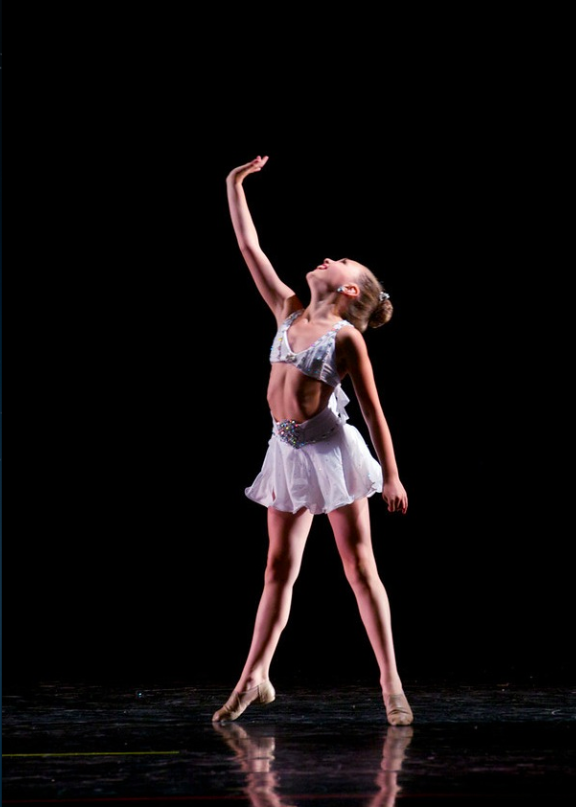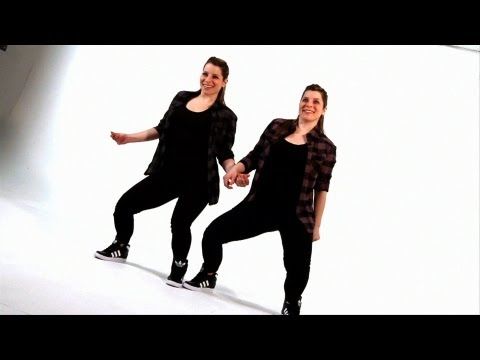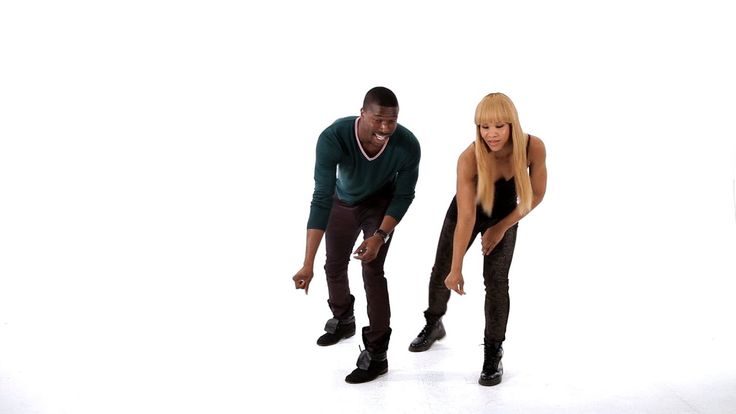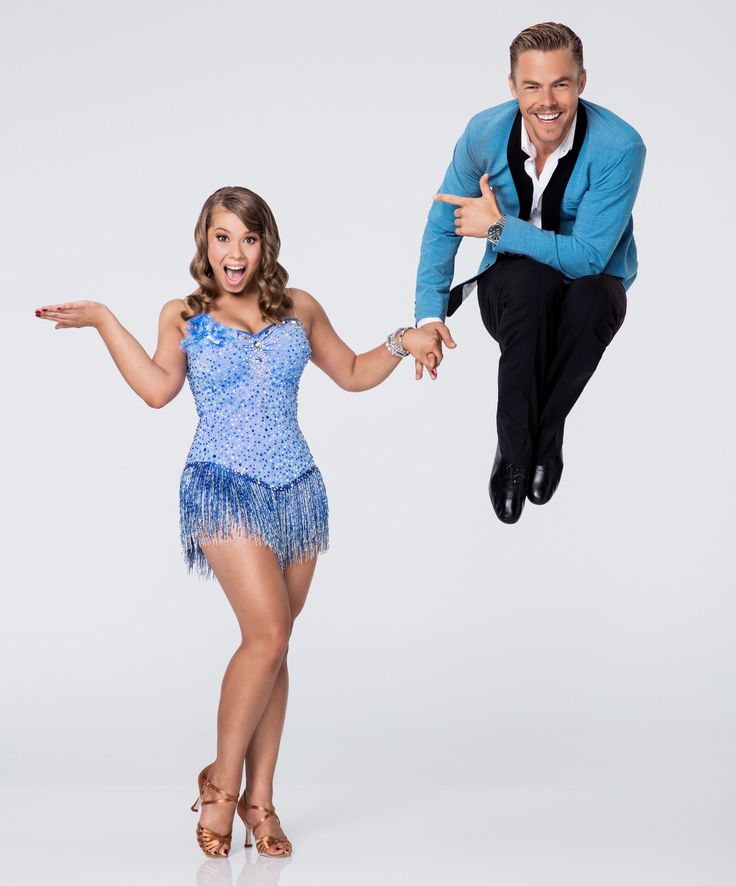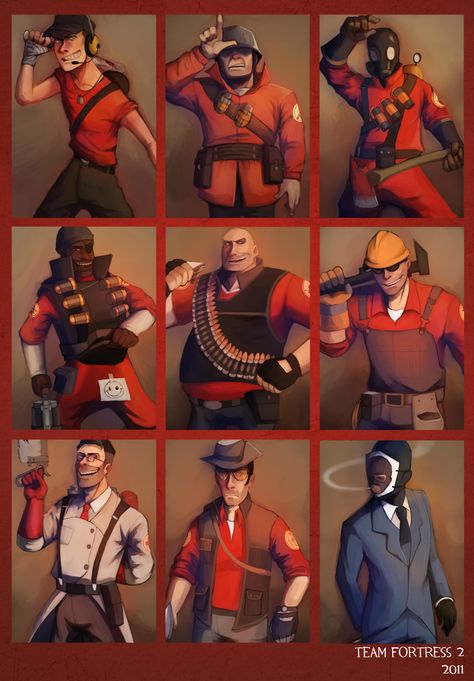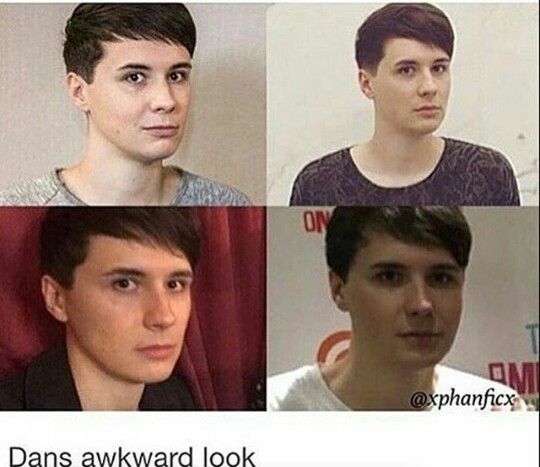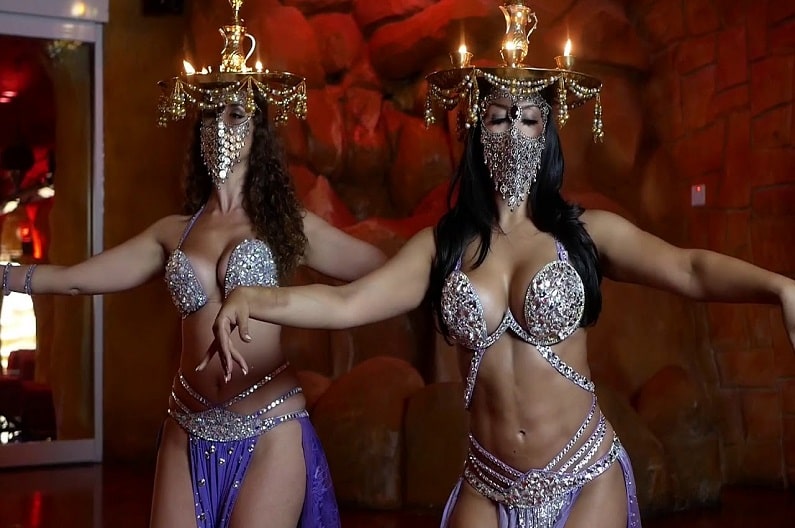How to become a lyrical dancer
1000 Years Lyrical Dance Tutorial & Routine
Learn a beginners lyrical dance with Hannah in this step by step tutorial to 1000 years (one thousand years) by Christina Perri. Some of you may recognise this song from the Twilight: Breaking Dawn movie. The lyrics are beautiful and perfect for a lyrical dance piece so she choreographed a new lyrical dance to this song. In one video Hannah shows you the full routine to music in one video, in another video she breaks down the individual steps with counts and lyrics to guide and walk through the dance routine step by step to help you learn the routine from the comfort of your own home.
The piece includes different dance movements that include turns on demi-pointe, gentle walks, flowing arm movements, floor work, a small backbend and more. Practice your flow and musicality with guidance from Hannah from Stardust Dance Academy, Cambridge.
Learn a new Lyrical Dance in these videos!
- Lyrical Dance Choreography Routine to "One Thousand Years" (1000 years) - https://youtu.
be/-83TSwoRdjY
- Lyrical Dance Tutorial and step-by-step walkthrough to "One Thousand Years" (1000 years) - https://youtu.be/iyOhKu2ZBqs
Routine Description:
Watch a demonstration of Hannah's Lyrical dance choreography routine to 1000 Years song by Christina Perri. Easy lyrical dance choreography online to learn at home for beginners & experienced dancers.
Tutorial Description:
Learn a beginner lyrical dance with me in this step by step tutorial. This lyrical dance routine has floor work, turns, and extensions. Practice your extentions and musicality too!
Difficulty / Level
This lyrical dance routine was designed to be adaptable for beginners and intermediate skilled dancers. Hannah advises of variations in the tutorial video to challenge any more intermediate dancers learning the routine to push themselves further.
Stardust on Social Media
Lyrical Dance Clips
Short for time but still want to see the routine? You'll find a clip of it at:
- TikTok Lyrical- https://www.
 tiktok.com/@stardustdanceacademy/video/6954857297407511814
tiktok.com/@stardustdanceacademy/video/6954857297407511814 - Instagram Reels Lyrical- https://www.instagram.com/p/COFfyB7F-wf/
- Pinterest Lyrical - https://pin.it/u9yV7ns
- YouTube #Shorts Lyrical - https://youtu.be/9P8tcJp-eXE
Transcript of 1000 Years Lyrical Dance Choreography Video:
Welcome back to the channel everyone! If you've not been here before, I'm Hannah from Stardust Dance Academy, Cambridge. I'm going to show you my beginner's lyrical choreography to Christina Perri's song (1000 years) a thousand years if you enjoy it and you want to learn this dance i've made a separate video which i've linked down below where i break down the steps, step by step for you. I hope you enjoy! [1000 years by Christina Perri music begins...]
[Song Starts - Lyrics]
Heart beats fast Colors and promises.
How to be brave?
How can I love when I'm afraid to fall?
But watching you stand alone.
All of my doubt suddenly goes away somehow.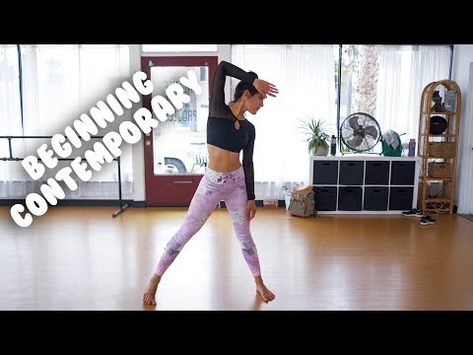
One step closer.
I have died every day waiting for you.
Darling, don't be afraid
I have loved you for a thousand years
I'll love you for a thousand more
[End of Song - Lyrics]
Thanks so much for watching everybody! I really hope you enjoyed that dance. If you want to learn the choreography i've made that separate video for you which i've linked down below in the comments and if you've got any other ideas of songs that you would like me to choreograph to drop me a message or drop a comment below you can connect with me on Instagram over @stardustdanceacademy and there are loads of other videos on this channel by me and some of the other Stardust teachers which i really hope you'll check out hope see you soon
Transcript of 1000 Years Lyrical Dance Tutorial Video:
Welcome back to the channel everybody, It's Hannah from Stardust Dance Academy, Cambridge. Thanks for joining me for this (dance) tutorial.I'm going to break down the dance step by step for you so you can follow (and dance) along. Then when you're ready you can check out the link below, which is to the music video which accompanies this (lyrical) dance (1000 Years by Christina Perri). I have loved making this video for you and I really hope you enjoy learning my dance. Let's get started.
[Tutorial Starts]
We're gonna start with our feet together, arms by our side. We start by holding our head in a dropped position, we're going to hold this position and then on the "and a" before count one our feet again aboard, change out and good then your hand is going to come out and you've got a little ripple like a burst out of your heart so it goes and or one good and then your other hand too and you're going to look at your fingers bring this hand into your heart then you're going to spin up on your toes 3. So, upon Demi pointes, good another little step forward and and this time you're going to completely relapse.So drop your head, drop your arms right forwards, good from the top 678 and 01234 and five good. You're going to bring this arm up six and then the other ones 7. And then we're going to turn lift your back heel and then push. Good for your front leg is strict and the back foot is up on Demi Point lovely. We're then going to rise up onto Demi points and our arms are going to go round the back of our head so we go up and step good pool and look at the hand. Same on the other side. Pole look at your hand and then you're going to take another step and do a windmill to finish down on one knee. Lovely, so let's recap that from the beginning, feet together 678 and 01. 234 and 567 per shaped an up an for an step threat. Nice windmill over and damn good. You're then gonna roll your front shoulder, roll it back and turn to look at your audience. Lovely, we're then going to stretch our leg rich and I want you to look up to the ceiling. Nice big stretch and make sure your foot is stretched. Get and this is on the lyrics, afraid to and then on the lyric fall, we're going to fall down.
So you sit down, hands, touch the floor, head goes down. Great. we're then going to roll, so stretch those feet, roll step onto your back foot and then take another step with your front foot. Good job from here. We're going to do a half a turn which is instigated with our back shoulder, so you're going to roll half a turn to face the other side. We're then going to step. You can either do this on a flat foot, or you can take it upon to Demi-pointe. We're going to circle the arms back and we're going to lift up into a parallel ratiré a step up and drop. Good, then we're going to reach your front hand forwards, and then it's our elbow that's going to instigate our turn this time. So we're going to have a nice strong elbow and it's going to turn around and then reach. Good nice work everyone. Let's see if we can add it all together from the beginning before I do the next little bit with you. So, feet together had relaxed hold 678 and 01. 234 and 567 per shaped and one and two pull. 34 Windmill, 5-6 head and shoulder.
7 reach 8 falling. What role to Step 3 for back shoulder roll ripple up and drop front arm elbow turn rich good so. After that turn, when you reach, you're going to bring your front hand into your heart and really stretch that back on beautiful. From here we're going to do a lovely swing, so again, you're going to bend your knees, relax forward, swing an up an rich and again so you're here. Relax the head, swing on, then reach that front arm. Good win then going to pull their arms slowly in and we're going to take 2 steps starting with our right foot going round in a circle with the lovely stretched feet. So we go, walk, walk so we finish facing the back. We're then going to take a lovely turn up on our toes and our hands are going to go up the side of our body as we turn. You can either do one or two or three however many times you want to do. If you love turning over as many as you can, so we've just done our two walks. Walk, walk. We're going to step on our right foot and arms go up.
Our body good, and then we're going to step out of it, and as we do that, we slowly open and push down with our arms. Good nice everyone. From here we're going to do a big step back, and we're going to switch off front foot back into our best with a nice stretched foot. Don't worry how high it goes, just give it your best shot. We're going to make this a hop, so as we swish, swish pop, we're going to hop on that underneath foot, stretching our arms into a gorgeous first arabesque. So see your leg forward and again, so we've just done that turn and we go step up. Good, and then we're going to turn arms in Jazz first turn up on your toes and then slide. Beautiful so we finish facing our corner. We're then going to do a little back ripple backwards so if you've got a really flexible back you can go for a nice backbend. If not you can just circle those arms, keep that foot stretched so we go circle here good. You're then going to step straight up onto Demi Point and we're going to stretch those arms and see if you can stay up on Demi point for a moment.
So we're going to go stretch. And then out good. And then you're going to keep this arm up and we're going to do a pirouette, so we're going to turn towards our back foot and we're going to lift it up. And this arms going around our head. So we're here we're going to go up and step out of it. Good nice job everyone. Let's see if we can do it from the beginning. All of that together. We've not got too much more to do, so we hold head dropped 678 and one. Tip 3 four and five. 6-7 per Shake going up and full. Pull back, but windmill over and down shoulder roll. Stretch and drop. Roll it round two steps to come up up back shoulder roll body ripple up and four front arm stretch Elbow turn rich. Swing it forward. Swing up two walks one. Two here comes your turns up as many as you want. Remember an open. Here's our big step hop step hop step. Turn slide and back going up and turn rich awesome. Good job. So we're here. Remember if you want to rewind and go over any bits at any point if you can.
If not, we're going to carry on 'cause I've nearly finished here. We're going to slide. Make sure you're stretching those totes. Get tucked the foot behind and nice and slow. This arm is going to float up good and then you're going to rise up and turn. And then the arm Palm is now facing you and it floats down. This side step in front we turned out here. This time it just goes up and down and then I want you to look forwards as you turn and then you're going to take two walks with gorgeous stretch feet. Or if you can fit four walks in, go for walks. But I've not got space so do as many books as you can to the back two or four and then it goes straight into the second verse, which if you want to repeat this choreography you can. Or if you want to make up your own, you can do that too. So let's try the whole thing from the beginning, one last time with counts and me talking you through it and then remember when you're ready to do it with music. That music video is in the comments below for you.
So feet together hold nice and still 678 hour one cheap turned 3 drop forwards an release up. Uh, push lift that back heel up on demi-pointe up and drop going back three. For Windmill 5-6 shoulder 7-8 dropping what role tip up 3/4. Shoulder 5-6 and 7/8 elbow. To turn 1. Reach to swing three. An for two walks. Walk, walk and turn arms up your body step step slowly bring it down ready step up. Step turn slide. Reach an up turn pohled and slowly up turn down. Remembers turn out your legs up. Down, keep looking forward as you rise up two steps, walk, walk. Good! well done everyone.
[Tutorial Ends]
Thanks for dancing with me everybody. I really hope you've enjoyed it. Don't forget to check out the music video so You Can Dance that Lyrical choreography as many times as you like with the music. If you enjoyed it, please drop me a comment below. You can also connect with me over on Instagram at Stardust Dance Academy. If you've got any little videos of you doing this lyrical choreography, I would love it if you shared it with me.Thanks again for joining me and I hope to see you back here soon. Bye everyone!
August 7, 2022
How to Become a Better Dancer
See how to get noticed at dance conventions, picked for main roles, selected on dance teams by becoming a better technician, leader, performer, and learner.
Here are 3 steps on how to become a better dancer:
- Step 1: Become an Excellent Technician
- Step 2: Becoming an Ideal Student!
- Step 3: Become an Exquisite Performer!
The answer is simple but not easy, in the quest to become a better dancer, there are a few areas that will need some attention to make good use of the information provided in this 4 part article. Each section of the ongoing article could be a short book. Four things make all dancers GREAT: they are great technicians meaning knowing your vocabulary, where it is derived, and how it is relevant today, secondly, they are great leaders, they influence others, especially as role models to the younger dancers in their studio.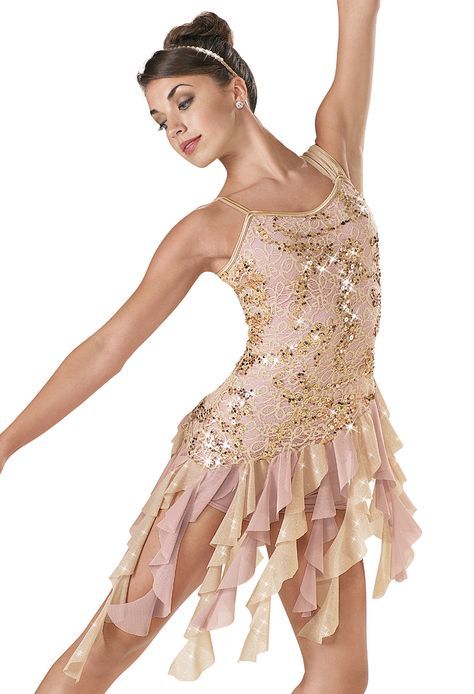 They may also have influence over their classmates or people in their communities, they are great performers, and they are great learners.
They may also have influence over their classmates or people in their communities, they are great performers, and they are great learners.
In this article, I’ll show you exactly how to improve as a dancer. If you follow those steps, you’ll improve and get better as a dancer. Here are the steps:
Part 1: Become an Excellent Technician
Vocabulary
To become a better technician, some fundamentals exist. Fine-tuning these basics will help you stand out as a dancer. Becoming a better technician means knowing your vocabulary, where it is derived, and how it is relevant today. This is where the internet has a limited supply of sound information. In other words, if it is in print, it is “king” when it comes to vocabulary. Start with “The Classical Ballet Dictionary” by Gail Grant or “ The Jazz Dance Anthology” by Gus Giordano.
There will be more resources discussed in one of the follow-up articles, Become an excellent Learner! You will have to resort to books, and there are many in ballet and jazz and modern that carefully breakdown the movements for deeper understanding, and you must seek them out.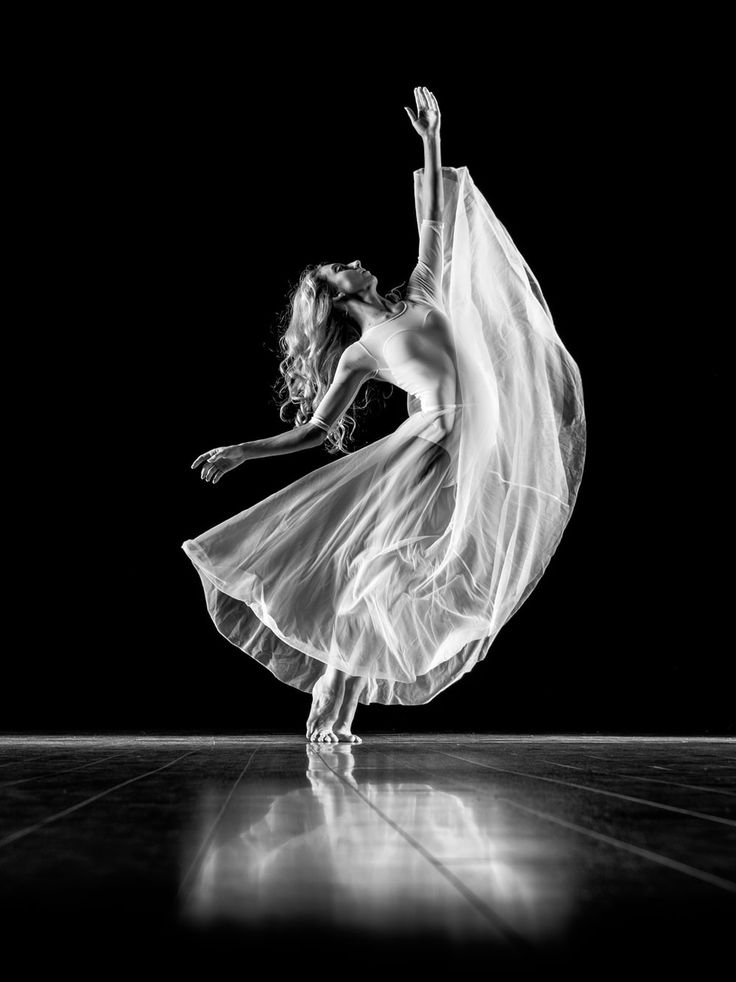 In other words, until there is a Wiki Dance or Universal unbiased dance resource library website with credible authors with diverse backgrounds and worldly knowledge, books will be your best teacher. Knowing the names of steps in ballet, jazz, and modern and hip-hop and what combination of moves make up the steps leads to the next point of knowing mechanics.
In other words, until there is a Wiki Dance or Universal unbiased dance resource library website with credible authors with diverse backgrounds and worldly knowledge, books will be your best teacher. Knowing the names of steps in ballet, jazz, and modern and hip-hop and what combination of moves make up the steps leads to the next point of knowing mechanics.
Mechanics
Mechanics are everything it takes to make a movement happen or move through space. All the parts of a movement from the first tendu in fondu to begin a pique turn to the demi plie, degage, push off the second leg to elevate the body into the air, move through space and close the second leg behind in demi plie is a glissade. Knowing all the parts doesn’t mean only working the parts, be definitely working on the parts of the movement that are keeping you from pristine execution. That attention to the details will come in handy for the final point to becoming a better dancer: refine the fundamentals of movement for the structured class.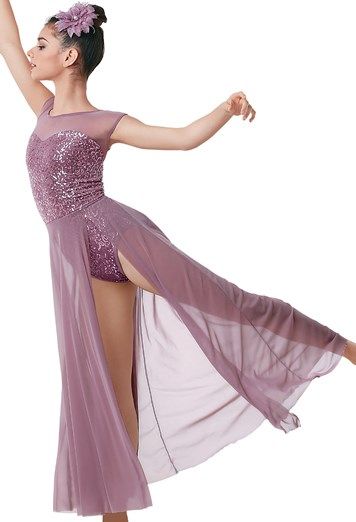
It is Not Popular but...
Every great athlete and performer knows the importance of a strong foundation. Look at the routines of the NBA All-Stars and Olympic athletes, from scripted meals to designed days, hour by hour, from start to finish to keep them at their best. Michael Phelps(the most decorated Olympian in history and Kia Greene (notorious bodybuilder) both attribute their success in their field to their attention to the basics. It is not popular now for a proclaimed advance dancer to take a lower level class to return to the essence of what made them advance.
All advanced dancers were once beginners, and the culmination of all the work leading up to becoming advanced/pre-professional happened prior to the label of the class or level.
Taking a lower level class to work on skills instead of only getting through the class because the complexity of each exercise allows for deeper concentration and more mastery! We all have to rinse and repeat every process that will keep us growing, internally, and externally, at our best.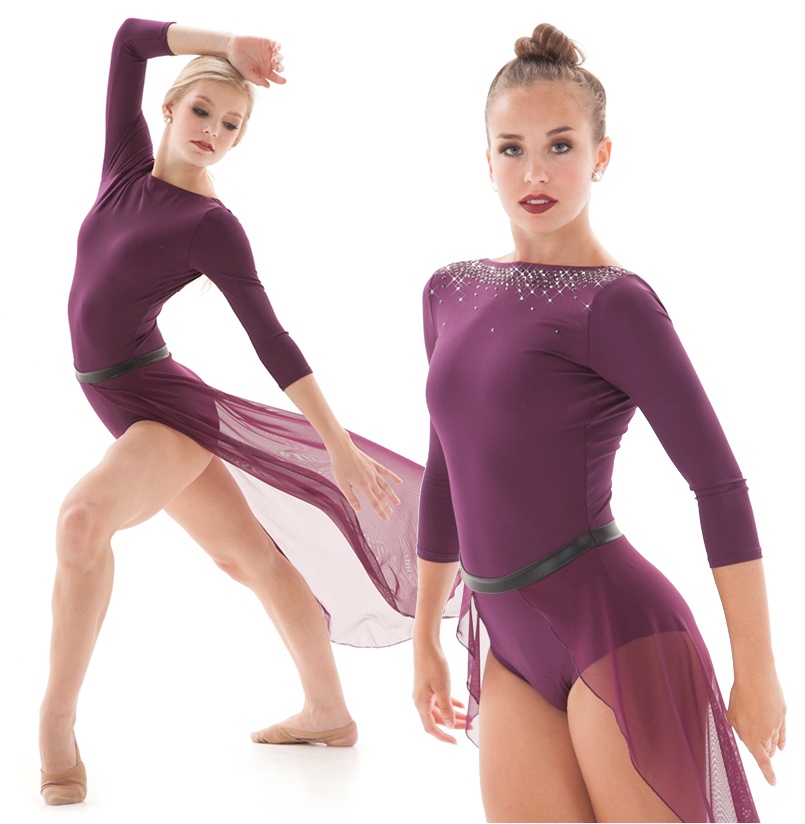 This is one-fourth of what it takes to become a better dancer, the follow-up articles will hold the other three parts that make up the whole formula that is needed to become the best dancer you can be!
This is one-fourth of what it takes to become a better dancer, the follow-up articles will hold the other three parts that make up the whole formula that is needed to become the best dancer you can be!
Part 2: Becoming an Ideal Student in The Studio or Dance classroom
Another essential part of becoming a better dancer is improving your ability to learn faster, more efficiently, and more effectively.
This means you must become an ideal student in the studio or dance classroom. This is the easy part for most dancers to adapt and see instant results.
The best way to become an ideal student is to be completely involved with what is being taught in class.
Simply put, paying complete attention to the teacher without distractions. Practically speaking, this means learning the skills for their fundamental value. Refining the fundamentals is what gives every dancer, gymnast, and athlete a competitive edge. Consistently working on this skill, without your teachers' repeated reminders are what allows the dancers to see immediate results in every class.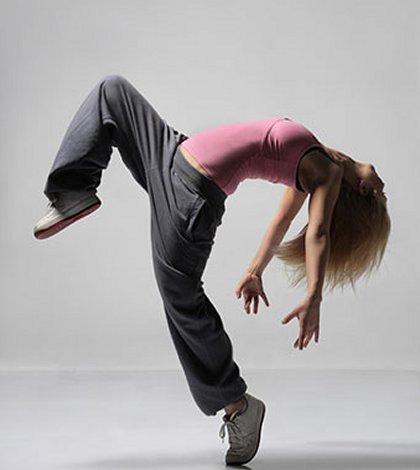
This is a mature step of a dancer, but it is readily available to all dancers all the time. When you take ownership of what your teachers tell you to do, and you start applying right away, you will see your dancing change within the class.
The most significant difference between intermediate dancers and advanced dancers is how they take corrections and new information. Advanced dancers take action to apply the corrections right away. Those same dancers have the self-motivation and self-discipline to continue working on the corrections until they accomplish them.
On the contrary, intermediate dancers wait to work on the corrections until a later time. This delayed approach is not fun for the student or the teacher, so the ideal student avoids the frustration of delayed gratification and advances quickly. These "ideal" dancers do what is asked of them at the time it is requested. The teachers enjoy seeing the effort in the ownership of their success.
Another secret skill that successful dancers use is asking questions with their eyes before they use their mouths.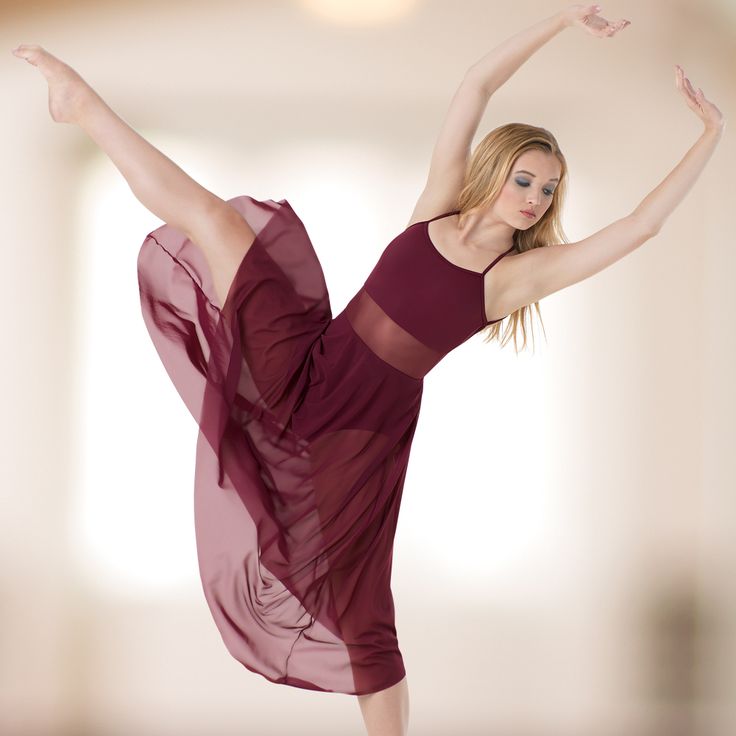 If the ideal student uses their eyes to pay attention to the teacher's demonstration and explanation of the steps, they will advance over less skilled dancers every time.
If the ideal student uses their eyes to pay attention to the teacher's demonstration and explanation of the steps, they will advance over less skilled dancers every time.
Only use words to ask questions if your eyes continue to miss something you are trying to accomplish.
This means that the ideal student is present mentally as well as physically in each class. Concentration and focus on the mastery of the skills in class are secret tools that advanced and professional dancer drill with each class. Their minds do not wander away from the class. Professionals and advanced dancers do not need more class to get better, they get more out of the lessons they take!
An additional tool that successful dancer use is downtime. When an exercise has been taught, the "ideal" student is working on the exercise until the teacher is satisfied with the results. The ideal student goes into multiple groups until he/she has adequate knowledge of the material and then continues to work until they have perfected the skills and movement to the best of their ability.
The key: ideal students work energetically at getting the exercises correct until it is their best. They do not settle for just doing the exercise for the sake of getting through the exercise. Mediocre is not in an ideal dancer's vocabulary!
The "ideal" student exemplifies the approach that "good enough is never good enough." The "Ideal" student's persistence will outshine natural talent and flexibility every time. Ideal students do not take breaks in their classes, they work the class for all it is offering until they are fulfilled.
A fearless eagerness to get the steps and skills correct makes the ideal students rise to the front of the class. The "Ideal" students are entirely comfortable making mistakes.
Mistakes show that they made choices, and even if the choices are not the best at the time, the teacher can correct the choice if needed. Teachers can not correct students that do not make decisions in class. It is a waste of time.
Dancers that are afraid to make a wrong decision, definitely will not make a correct decision.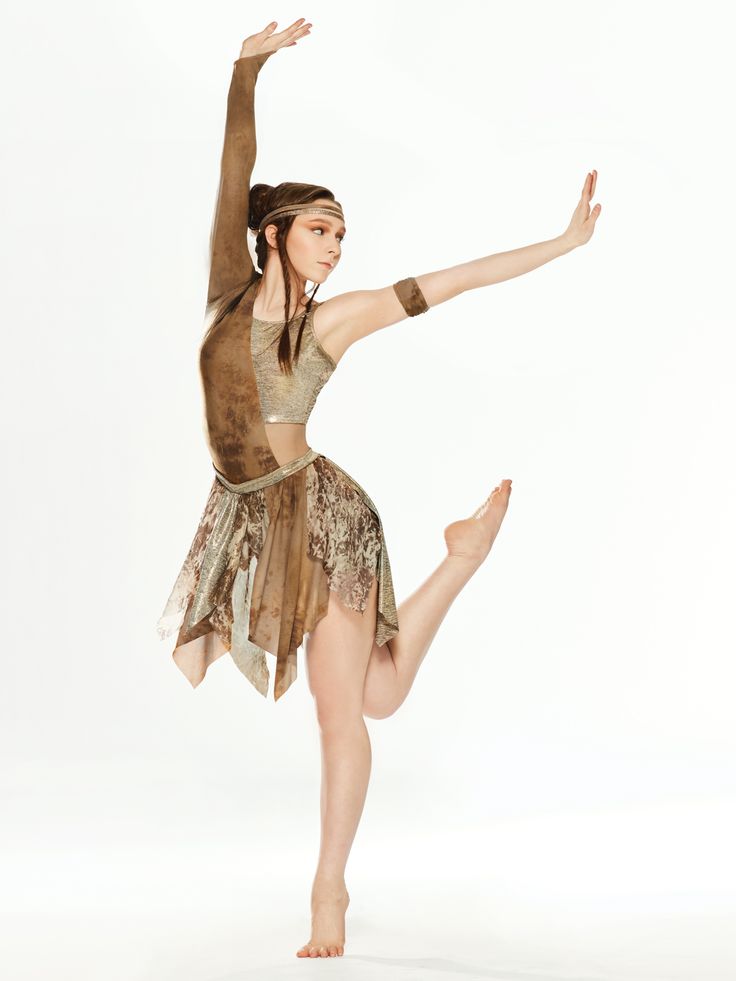
What I am trying to say is that you should do the exercise or the steps in their fullest range of motion, covering as much space as possible no matter what. If they are wrong, adjust to the correction and do it again, bigger, until it is consistently correct every time you attempt the movement. Most dancers don't do this part.
The "Ideal" dancers adjust how they learn, so they get it correct right away. Most dancers waste their time learning and perfecting a "mark" through. Even at 100% mark through, it is still wrong. An ideal dancer will not settle for a "mark," they learn it correctly and spend time enjoying the steps instead of using their time to learn multiple incorrect versions of the combination.
They have a high standard for how they present themselves. They are tuned into the details that add up to make a massive difference over time. Their neat hair and neat dress code, as well as being thoroughly prepared for class, all affect how they pay attention and work in class.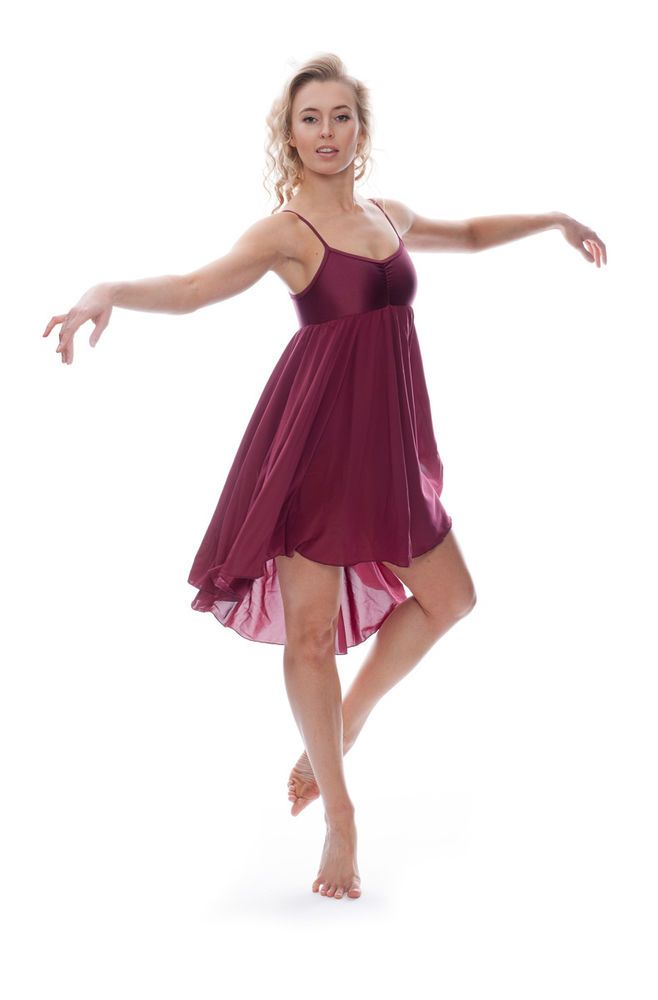 Satisfied knowing the work they put in was their best, ideal students always stand out because of the high standards they demonstrate.
Satisfied knowing the work they put in was their best, ideal students always stand out because of the high standards they demonstrate.
The most pleasing part for teachers is that the "ideal" students make us want to become better teachers! It is a two-way street, and both win.
Becoming a better dance is a four-part circle. The first is to become an excellent technician so that you master the information from every angle. The second part is to become an ideal student that can be referred to as an example to be patterned after.
Part 3 - Become an Exquisite Performer!
This is the 3rd part of a 4 part series on how to become a better dancer. Previously, the topics Become a Better Technician and Become a Better Learner have laid the groundwork for the first half of how to become a better dancer. Adding to the list is becoming so “good,” you can not be overlooked. Becoming a better dancer means becoming a better performer. Performing possesses the magnificent power of dance.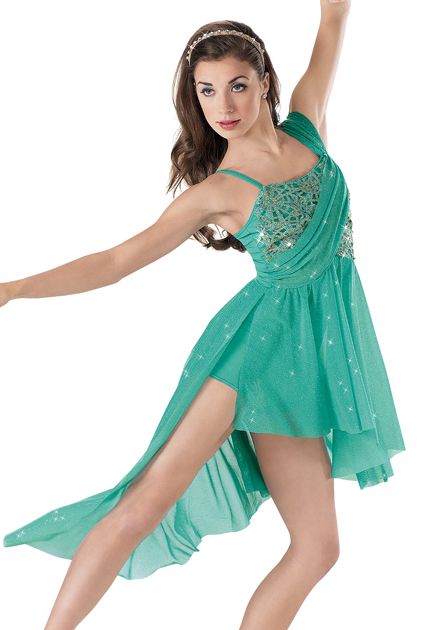 It is what drives us to blossom in front of an audience. Using the body to express feelings, moods, and set tone on stage are the characteristics of an exquisite performer. Allowing expression to morph into its fullest potential is the hidden treasure held by every dancer.
It is what drives us to blossom in front of an audience. Using the body to express feelings, moods, and set tone on stage are the characteristics of an exquisite performer. Allowing expression to morph into its fullest potential is the hidden treasure held by every dancer.
There are several practical ways to improve performance quality: Be Present, Be Aware, Be Focused, Be Mature, Be Confident, Be Resourceful.
Be Present
Having your mind and body completely undistracted while taking a class is obvious, but has become routine. Giving your mind and body what is needed to concentrate on is the solution. Eliminate distractions! The brain can not successfully fulfill two cognitive functions at the same time. It can focus on one piece of information or the other, but not both at the same time. Knowing this, dancers and teachers need to tolerate limited distractions in class/rehearsal. Clear objectives for time in class is a way for everyone to feel accomplished. A clear focus will allow the teachers to communicate and the dancers to reciprocate effectively and save time in the learning process.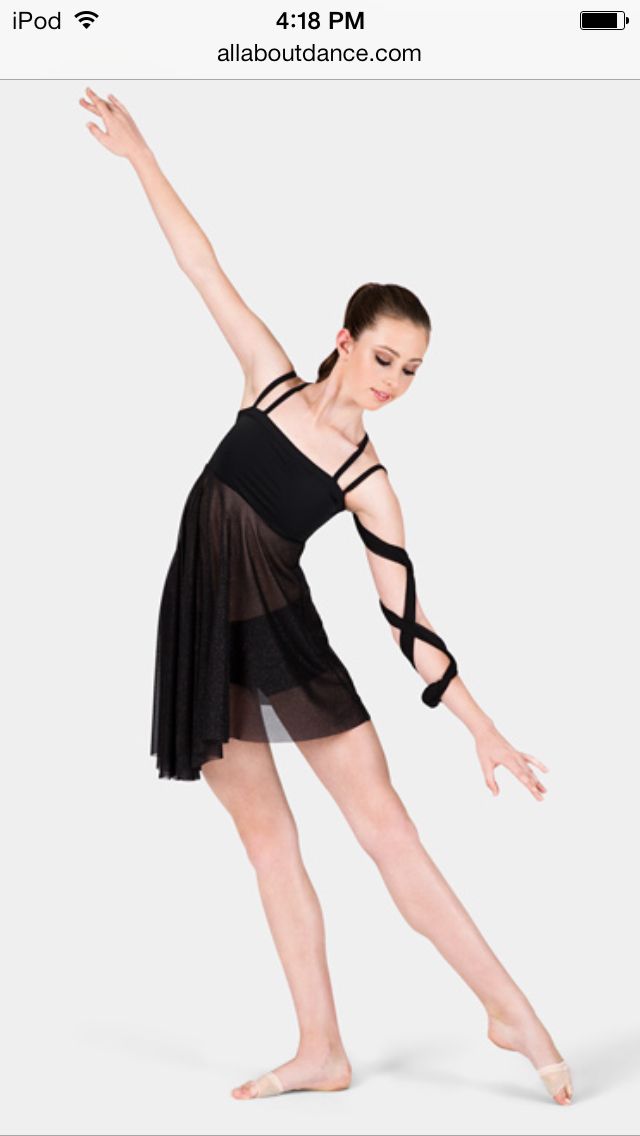
This clarity will open up many more opportunities for dancers to excel.
Being prepared to accomplish the objectives for the class will take some pre-work by the teacher and the student, and the benefit will shine through at performance time. It will be easier to pick up the choreography, and the dancers will pick up choreography faster. More importantly, it will give the dancer more time to put your own style in the choreography. When observing a dancer’s level of performance does not match the level of expectation, evaluate the dancer’s learning process, and use more clarity in class to get a better result.
Be Aware!
Being present means, the dancer has a sense of awareness. The idea of awareness is usually emphasized in meditation and yoga, but the principle is universal when moving the body through space. Physical awareness of the dancer in space and the relationship of the dancer to other dancers in space is crucial. The mental awareness is where some dancers fall short when attempting to hone performance skills. To improve mental awareness for the sake of becoming a better performer, dancers can make a note of sensations that are felt while doing choreography.
To improve mental awareness for the sake of becoming a better performer, dancers can make a note of sensations that are felt while doing choreography.
How do body parts feel when moving quickly or slowly as well as how the weight of the body feels on against the floor when shifting weight are two ways to become more mentally aware and give more foundation for communicating a feeling. Using all the senses is vital to becoming a first-place performer.
These can be simple cues given by the teacher while the choreography is being taught. If only steps are given without a base or meaning to stand on, trying to add them later will be more of a challenge. Teachers may have to spend a little more time on the front end of choreographing, but it will pay off when it comes time to show the work to an audience.
Be Focused!
When focusing on clear direction in class/rehearsal, consider the genre. There are some forms of dance that innately make them easier to perform than others.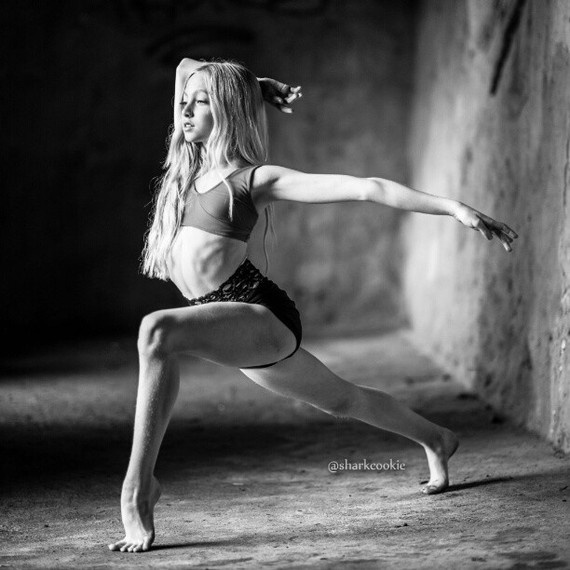 Jazz dance, musical theatre, and hip-hop are all allowed for the dancer’s personality to come out right away from the beginning of class. The tone and mood of the music give the class an upbeat canvas to try. Jazz music and jazz dance have the most room for individuality and personal expression through the given steps. If the music has words, hip- hop and lyrical dance also give the dancers an opportunity for expression of the words that make up the lyrics to the song. Being in tune with the meaning of the lyrics will give dancers a solid foundation for how to express movement.
Jazz dance, musical theatre, and hip-hop are all allowed for the dancer’s personality to come out right away from the beginning of class. The tone and mood of the music give the class an upbeat canvas to try. Jazz music and jazz dance have the most room for individuality and personal expression through the given steps. If the music has words, hip- hop and lyrical dance also give the dancers an opportunity for expression of the words that make up the lyrics to the song. Being in tune with the meaning of the lyrics will give dancers a solid foundation for how to express movement.
Think of literary analysis when listening to the lyrics of a song. Remember, the songwriter and the vocalist are artists themselves. The meaning of a song or the lyrics of the song in its entirety has to be considered when performing, not select verses. It is easy to encourage younger dancers to embody simple lyrics on stage. This innocent search for different ways to communicate on stage is vital for a well-rounded performer.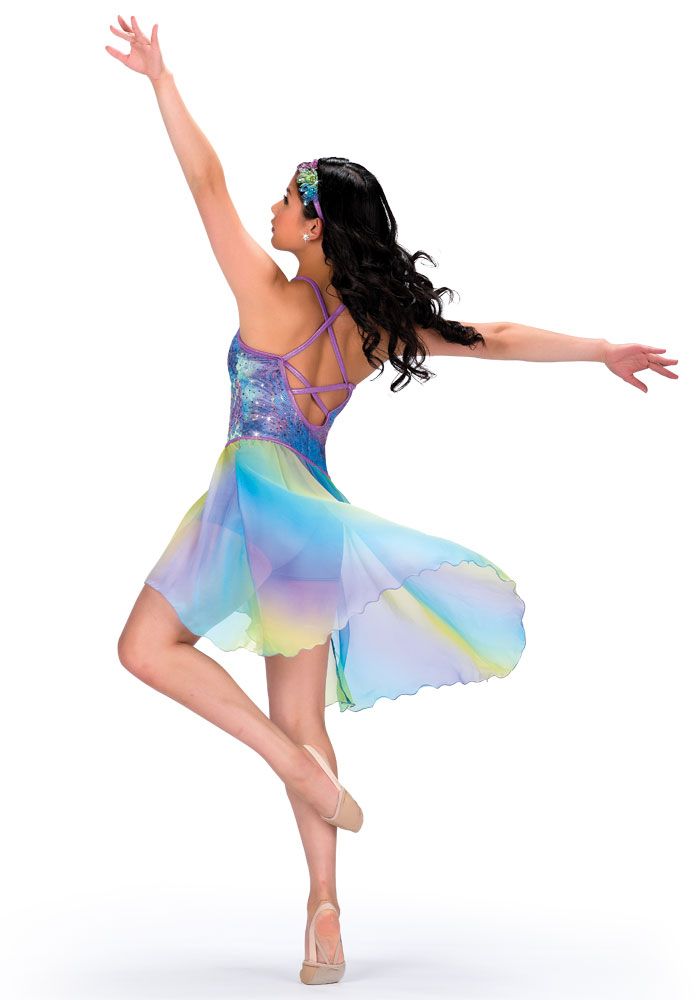 The ages of 6-10 years old are the best ages for dancers to delve into better performing skills.
The ages of 6-10 years old are the best ages for dancers to delve into better performing skills.
Starting, younger dancers with lively musical theatre dances is excellent. Musical theatre dance has a few parameters because the music is used to help tell the story of the musical, and freedom is not as broad and interpretive. Adding lyrical to the list of styles of jazz would be an advancement to a dancer’s arsenal. The movement quality in lyrical really feeds from the dancer’s technique. Weak technique showcases a dancer’s shortcomings and steals the desired impact.
Be Mature!
Maturity in dance is similar to maturity in nature. Both take time, experience, growth, and development, but unlike natural, maturity in dance is not linked to age. Like the wide variety of sizes and body shapes in the world, a four-year-old in America is not the same as a four year in another country. Teachers educating students and parents on this process can prevent confusion and frustration along the dancer’s journey.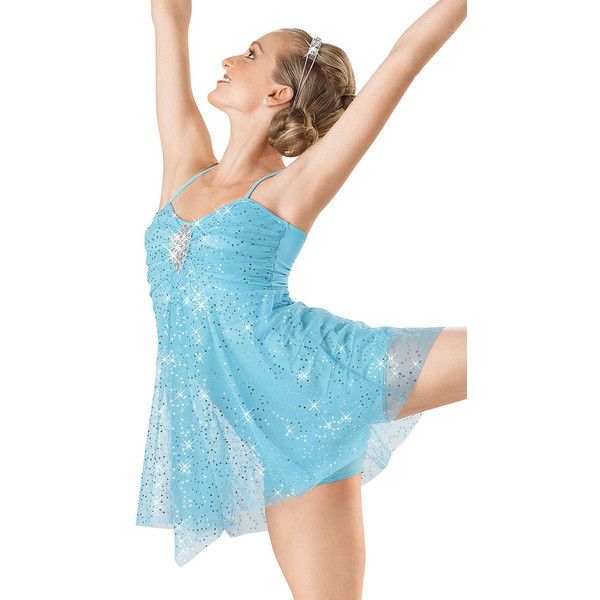
Performing skills take practice the same as technical skills. As dancers develop their maturing with time and various experiences, the eloquent performer evolves. Mature dancers have a well-founded understanding of their senses and how those senses affect the brain. It takes a keen ear to listen to the words and a mature understanding of what the songwriter is trying to communicate to show a connection with the music.
In addition, it takes a keen eye to pick up details in the choreography while it is being taught. Efficient learning is a true demonstration of a mature dancer. The practice of these skills is only sharpened by doing them. There is no shortcut to being a great performer; it is only developed over time with proper repetition.
Be Confident!
Through the consistent practice of being present, being aware, being focused, and being mature, a dancer’s confidence grows. Confidence is the supreme badge of honor in performance. Confidence on stage, confidence in class, and confidence in rehearsal are never overrated.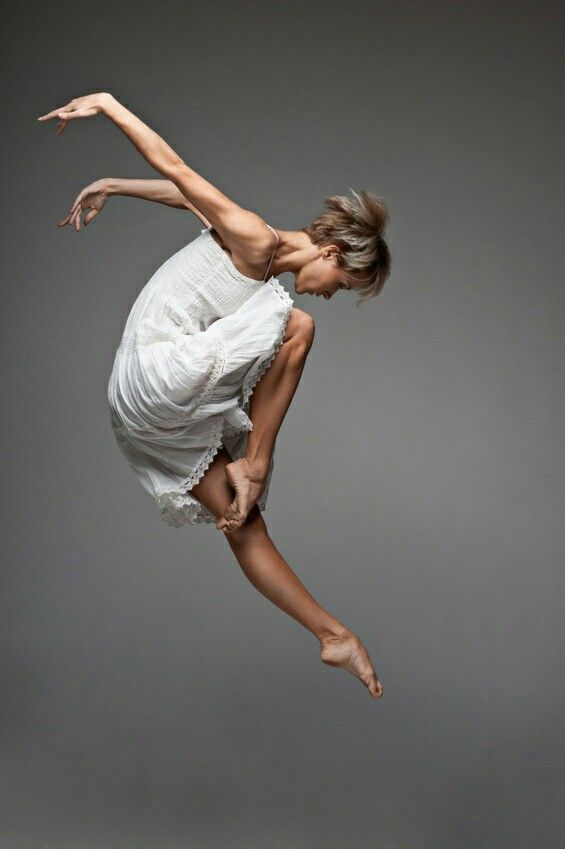 Knowing what you know opens a wide opportunity to explore various ways to communicate with, you know.
Knowing what you know opens a wide opportunity to explore various ways to communicate with, you know.
The faster the dancer is comfortable with the steps, the faster the steps will look more natural on their bodies. The faster the steps look more natural, the easier they are to recall. The easier they are to recall, the less stressful the choreography becomes. Once the choreography is not stressful for the brain to remember, the door is open for personality to come through. This is where the “rubber meets the road” in dance. This is where performance quality and technical ability have to become equals. Technique is the foundation on which performance quality is built.
Akin to the foundation of a house, the walls depend on the foundation for support to stand. If the foundation of a house is weak, the walls will eventually fall. In the same, strong technique is the foundation that supports strong performance quality.
Be Resourceful!
A dancer is in class many more times than he/she may be on stage, so waiting until stage to work on performance skills does not set the dancer on a path for improved performance quality.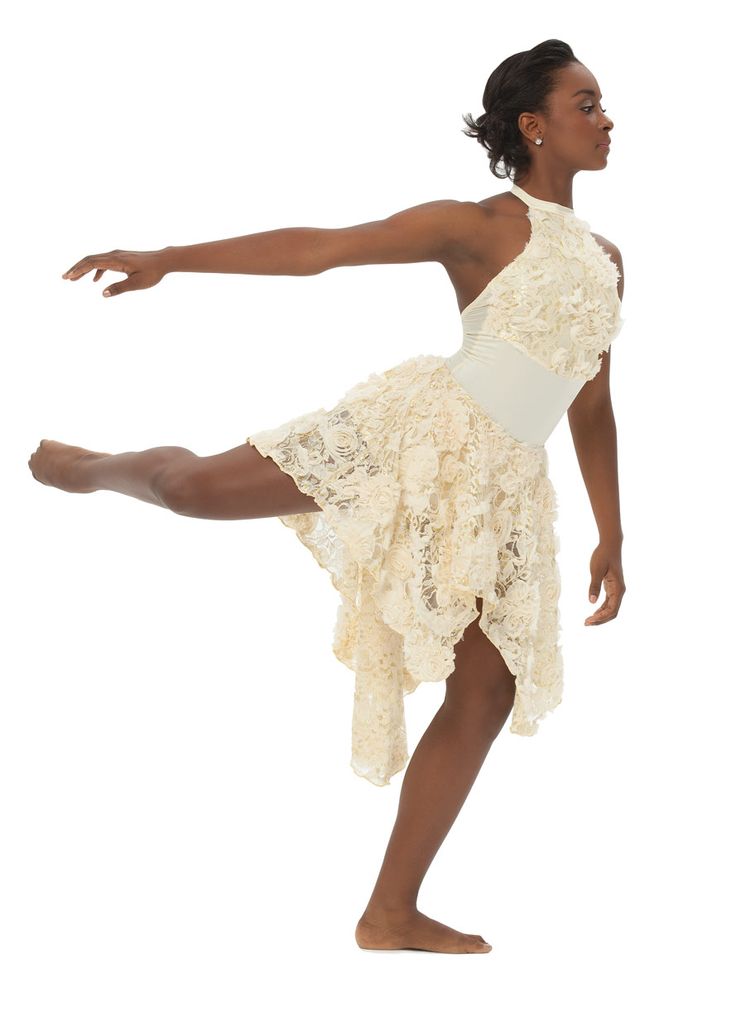 Class is when to do it! Dancers are in class 30-36 weeks out of a year and in classes more than three times a week. With a simple application of the performance building skills, a dancer has almost 100 times to improve his/her performance. This gives the dancer control over the speed of developing better performance quality.
Class is when to do it! Dancers are in class 30-36 weeks out of a year and in classes more than three times a week. With a simple application of the performance building skills, a dancer has almost 100 times to improve his/her performance. This gives the dancer control over the speed of developing better performance quality.
Teachers would rather reel a dancer in for performing too much too big than to work to pull out the smallest smile.
Take the chance!
Fellow dancers know how it feels to see confident performing, even non-dancers can tell when a dancer is “into it” on stage. With consistent practice, all the performing skills can grow and improve.
where to study, salary, pros and cons
Author: Professional Guide
Updated by
Dancer is a person of art who performs rhythmic movements to music, taking part in theatrical performances, shows.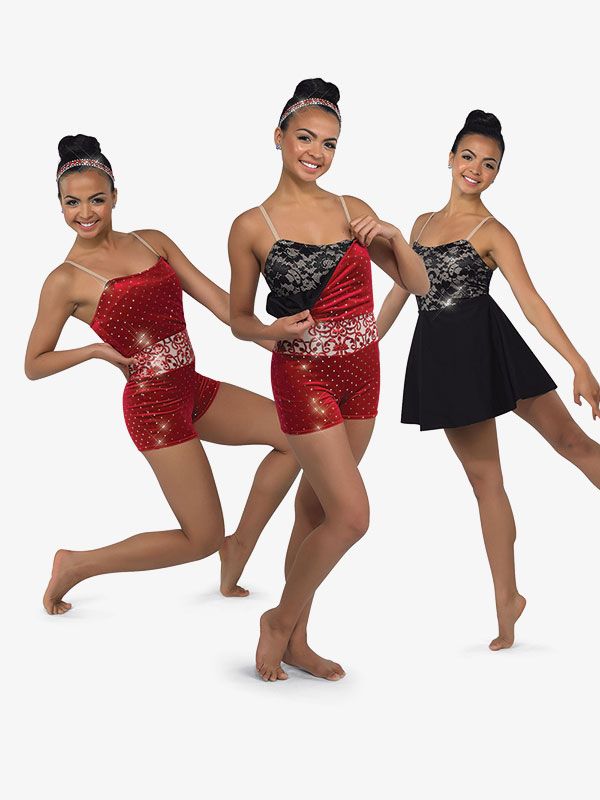 The profession belongs to the type “a person is an artistic image”, it requires excellent self-discipline and, of course, talent. Children who distinguish literature, physical education, music and singing from all school subjects can become dancers. By the way, the ProfGid career guidance center has recently developed an accurate career guidance test that will tell you which professions suit you, give an opinion about your personality type and intelligence. 9Ol000
The profession belongs to the type “a person is an artistic image”, it requires excellent self-discipline and, of course, talent. Children who distinguish literature, physical education, music and singing from all school subjects can become dancers. By the way, the ProfGid career guidance center has recently developed an accurate career guidance test that will tell you which professions suit you, give an opinion about your personality type and intelligence. 9Ol000
Brief description
This profession has a rich history and is closely associated with the arts. However, the success of dancers by more than 50% depends on dedication, endurance, self-discipline. A specialist can work independently, performing solo choreographic numbers, it is also worth highlighting pair and collective dances. There are a lot of types and techniques of this art direction:
There are a lot of types and techniques of this art direction:
- ballet;
- pop and folk dance;
- historical dance and others.
See also:
Also distinguish styles such as street jazz, hip-hop, R'n'B, contemporary dance, street dance, etc. Dancers choose the style and type of performing arts based on their physical abilities, temperament, personal preferences. On stage, they create artistic images, convey emotions, making the hearts of the audience tremble.
Features of the profession
Anyone can become a professional dancer, but it is worth starting training in childhood. Choreographers recommend giving children to dance studios at the age of 3-7 years, which will allow them to develop good posture, plasticity, stretching, a sense of rhythm and other skills necessary for professional performance. Dancers most often work in 1-2 overlapping styles, they pay special attention to training and rehearsals, maintaining excellent physical shape. A career is short, because its peak is at the age of 15-25 years, and after 30 years, most specialists change their field of activity. They can realize their talent and knowledge in other areas, working as directors, choreographers, school teachers.
Dancers independently or under the guidance of a choreographer create performances: choice of music, sequence and rhythm of movements, costumes and image, facial expressions, plasticity. Before performing the dance, they rehearse for a long time, honing their skills. Many members of this profession often travel around their home country and travel abroad, where they give concerts. The activity is associated with certain difficulties, which leaves an imprint on the lifestyle and character of the dancer.
Pros and cons of the profession
Pros
- Excellent physical development, because dancing strengthens the body and willpower.
- Opportunity to work on the best stages.
- Talented dancers achieve success quickly.

- The profession is interesting, active and ambitious people will like it.
- Opportunity to earn income from various sources, because dancers work alone or in pairs, can take part in private productions, star in music videos.
- Useful business connections in the world of art.
- The opportunity to change the field of activity, because dancers often open schools, give private lessons, work as choreographers - the choice of directions is huge.
Cons
- High injury rate.
- Serious injuries can put an end to a professional career.
- Short career period.
- Very high competition.
See also:
Important personal qualities
Dancers have excellent plasticity, but in this profession not only technical performance is important, but also emotionality. The dancers convey the idea of the performance with the help of movements, facial expressions, so they must be distinguished by well-developed artistry.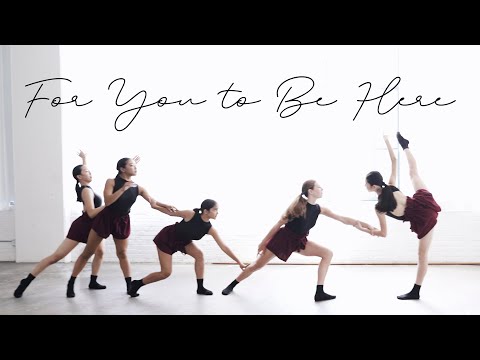 Increased efficiency, resistance to physical stress and low pain threshold are very important, because rehearsals and performances often end with sprains, dislocations and other minor injuries. Only those people who do not suffer from laziness, negligence, and excessive self-confidence ascend to the pinnacle of success.
Increased efficiency, resistance to physical stress and low pain threshold are very important, because rehearsals and performances often end with sprains, dislocations and other minor injuries. Only those people who do not suffer from laziness, negligence, and excessive self-confidence ascend to the pinnacle of success.
Dance training
Professional education can be obtained in different institutions:
- schools and academies of choreography;
- dance studios;
- colleges;
- universities.
There are no special requirements for the education of a dancer, the level of his skill is determined during choreographic tests. It is worth starting training at a young age in order to reach a professional level. Let's consider the most interesting directions:
- "The art of dance (by type)", implemented in choreographic colleges and schools. You can start training after grades 7-9, which depends on the requirements of the college;
- The Art of Ballet.
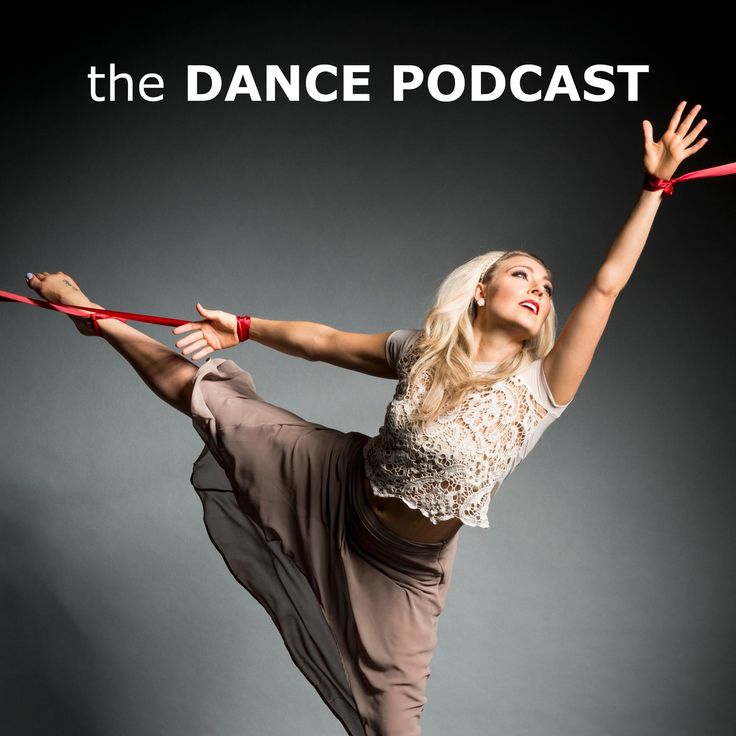 The direction of training is open in many creative colleges, studio schools, academies. Children who have completed the 4th grade of the school are invited to study.
The direction of training is open in many creative colleges, studio schools, academies. Children who have completed the 4th grade of the school are invited to study.
You can also go to study at a university, choosing a specialty related to choreography, folk dance and other areas. Primary training can be obtained in public and private schools of choreographic art, during individual lessons.
Universities
-
4 years
90,000 ₽/year
12 budget places
-
4 years
158,100 ₽/year
23 budget places
-
4 years
65,000 ₽/year
8 budget places
-
4 years
200,000 ₽/year
16 budget places
Best Primary Schools
- Dance Quarter School.

- School for children "Dancevaliya".
- State 27 Dance Studio.
Best colleges and academies for dancers
- ARB im. A. Ya. Vaganova.
- MGAH.
- MCU at the Moscow State Academy of Theater Arts "Gzhel".
- School-studio (school) at GAANT them. I. Moiseeva.
- KMTI them. G. P. Vishnevskaya.
Best universities
- IPCC.
- GITIS-RATI.
- MGAH.
- ARB them. A. Ya. Vaganova.
- Russian State University A. N. Kosygin.
- ISI.
- UGAI.
- SPbGUP.
- AGIIK.
- KemGIK.
See also:
Place of work
Dancers are in demand in theaters, film industry and organization of holidays and events. They can work as teachers, find vacancies in nightclubs, private groups - there are many options for employment.
Salary
There is no exact tariff rate in this segment, because everything depends on the style in which the dancer works, personal qualities, education, reputation and experience. Dancers can receive a fixed salary or fees for each performance, lesson.
Dancers can receive a fixed salary or fees for each performance, lesson.
Dancer's salary for October 2022
Salary information provided by hh.ru portal.
Russia 25000–160000 RUB
Moscow 30000–25000 RUB
Professional knowledge
- Classical choreography.
- Acting.
- Fundamentals of physical training.
- Art History.
- Foreign languages (for professionals who work abroad).
Famous dancers
- Karen Hardy.
- Ekaterina Krysanova.
- Yankovsky Vyacheslav Vyacheslavovich.
See also:
Examples of companies with vacancies as a dancer
she danced in black leotards. Like herself she thought such a costume reinforced the meaning and staging skills. thin, tall, all in black with a smooth hairdo, she was alone in an empty hall dancing something such that it was difficult to clothe in names, but with her dance she conveyed life.
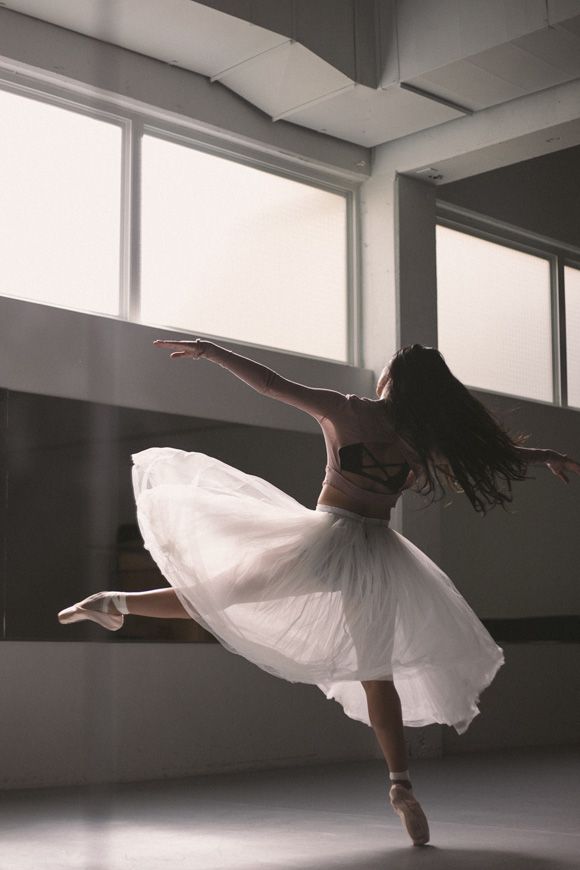 Here Anna danced the pregnant woman, suffering from nausea, but carefully bearing her fetus, then she suffering gave birth, caressed and rocked your child. And it couldn't be confused with what. And it was a dance!
Here Anna danced the pregnant woman, suffering from nausea, but carefully bearing her fetus, then she suffering gave birth, caressed and rocked your child. And it couldn't be confused with what. And it was a dance! Anna told Alex what she saw for the first time this number at the graduation concert graduates when she entered the ballet school. Then she did not see the dance, she I saw only this woman, her belly and her child. And when the hall was turned on light, examination board lazily applauded, exchanging views on about the technique of performing some pa, and Anna sobbed, unable to contain emotions engulfing her. It seemed to her that she herself has experienced it all. She is very loved this miniature and since then dreamed dance it yourself.
Now, having finished she left the room, took a towel and sank into a chair. She didn't see Alexa, she was still immersed in his dance, and Alex could not understand, wipes Is she a drop of sweat from her face, or is it tears”
An excerpt from a story "Vacation".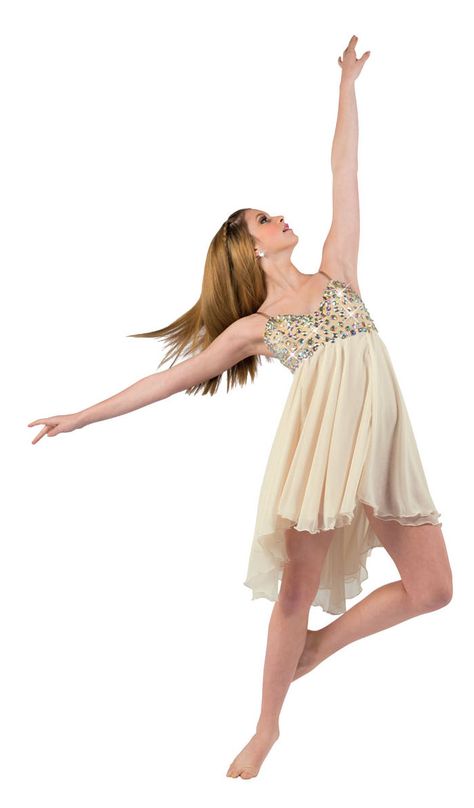
At the actor's skill is a huge advantage in front of just technology and just choreography. With the ability immerse yourself in a certain given emotional state much easier to choreograph and some technical elements on a large piece of variation.
How does this happen?
Try observe the movement of others you people and behind your own movement - in life, in various situations and in various emotional states.
Do you see how during the most ordinary household communication changes head tilt, posture, hand gestures, tension and relaxation the whole body of your interlocutor or its individual parts?
What is the reason for this? Of course, the state in which there is a person, those thoughts that build in his head certain logical chains. Moreover, not at all necessarily at the same time the person expresses all my thoughts, most thoughts run past the speech apparatus, often reflected only in changes movements, creating only muscle reaction. In fact, even the thoughts we can't express for some reason (or do not want, or we don’t know how), just cause muscle reactions, as if asking outward and striving come true in any way. That's why experienced psychotechnicians easily read our thoughts and feelings.
In fact, even the thoughts we can't express for some reason (or do not want, or we don’t know how), just cause muscle reactions, as if asking outward and striving come true in any way. That's why experienced psychotechnicians easily read our thoughts and feelings.
If a person is something afraid or it is difficult for him to decide some problem, he slouches, if he feels some potential danger and the need to protect oneself from the interlocutor - crosses his arms or legs. And so on, we all heard about it or read, but did not think about that all these movements, all that treacherous information that is expressed on our body without our consent is also plastic! And those thoughts and feelings that it is called - this is nature, or if want, the psychology of such plasticity.
Thus, in Each of us has already been laid down by nature the ability to express feelings and thoughts through not language, but body, that is ability to move intelligently by which one can read any information.
Importance this discovery for us lies in the fact that that, having the ability to transform, man by his natural reaction body gives rise to plasticity and choreography in his dance, coming from his thoughts and feelings, and therefore he does not need hire a choreographer to exhibit each in its own variation finger, in an effort to give a pose naturalness.
from here may be tempted to learn how alphabet for the deaf and dumb, what position What means. Of course, there is a set gestures, which is known throughout the world and will be understandable to everyone, for example, smile. However, having learned some set gestures that seem eloquent to you alone, you risk making your viewer work hard to understand what you depict this on the site.
The point is not that would learn. Your variation is enough for you - here is your set of gestures, now you need fill the variation with meaning.
Pay note that the same variation, in in principle, you can give the dancer "D" class, and an "M" class dancer, and they it will be performed differently not only because of differences in technical training, but also in the power of the difference in understanding why they dance what they dance and to whom it need. As a rule, the dancer "D" class dancing for trainer and does what the coach tells him, and the master has his own sense of dance, his own feeling in it. He's already dancing meaning, eh not just a technique and understands that technique he needs as a tool for expression this meaning. And the dancer "D" class is convinced that the most important thing is to dance correct technique. And at my level he is absolutely right in this, because the main task is to learn to control own body, master it like a tool, create the basis for the dance.
As a rule, the dancer "D" class dancing for trainer and does what the coach tells him, and the master has his own sense of dance, his own feeling in it. He's already dancing meaning, eh not just a technique and understands that technique he needs as a tool for expression this meaning. And the dancer "D" class is convinced that the most important thing is to dance correct technique. And at my level he is absolutely right in this, because the main task is to learn to control own body, master it like a tool, create the basis for the dance.
Submission of information material should be such that I had to read into it. The present the art of transformation lies in influencing per soul of the viewer, bypassing the process of awareness a spectator of what he sees, not a thought impact, but immediately on feelings. And then it's efficient. And for this it is necessary the dancer himself to be at the moment of performance a bottomless vessel of feelings pouring on spectator, not a demonstrator of his portrayal skills.
During practical I have often heard lessons from the dancer: “I don’t think this figure natural." The point is not that the figure you are performing was somehow natural, it's yours the task is to make the figure natural, fill it with meaning. Not a figure should to be natural, and that plastic, which you fill it.
Is it natural for beginner choreography in general?
Is it natural any foreign language for you? And for no native speaker of this language more natural, however, verbal We all have the same apparatus.
All the above does not mean that acting skills you need for in order to save money on trainers. A mentor is needed. For only a glance from the outside can tell how logical is your variation, your interactions, how aesthetically pleasing that you do. None of us insured against extremes and inadequacies, even the most advanced. And at the very cool Guru has his own Guru, and he himself enlightened sensei has his own sensei, and to him is the Lord God.
But this means that you will free your coach from monkey work, boring, uncreative, painstaking. Learn to fill yourself your dance with meaning without forcing your teacher to impose their worldview on you.
Again, this is not means that you must remove your teacher from working on your image - the teacher knows better your image, experienced the teacher is the same psychologist.
For clarity and more convincing than my words, you can view recordings with the best dancers world and analyze their variations and their plastic. Try to understand what relationship they dance with what words (dialogues) can this be expressed? What kind specific movements (i.e. vocabulary) tell you about it?
In fact, dancer of sports dance much easier than a theater actor, for example, a movie or ballet, because the dancer is an athlete has a luxury that is unaffordable for professional actor - he can play only yourself and your feelings, not the role assigned to him by the director.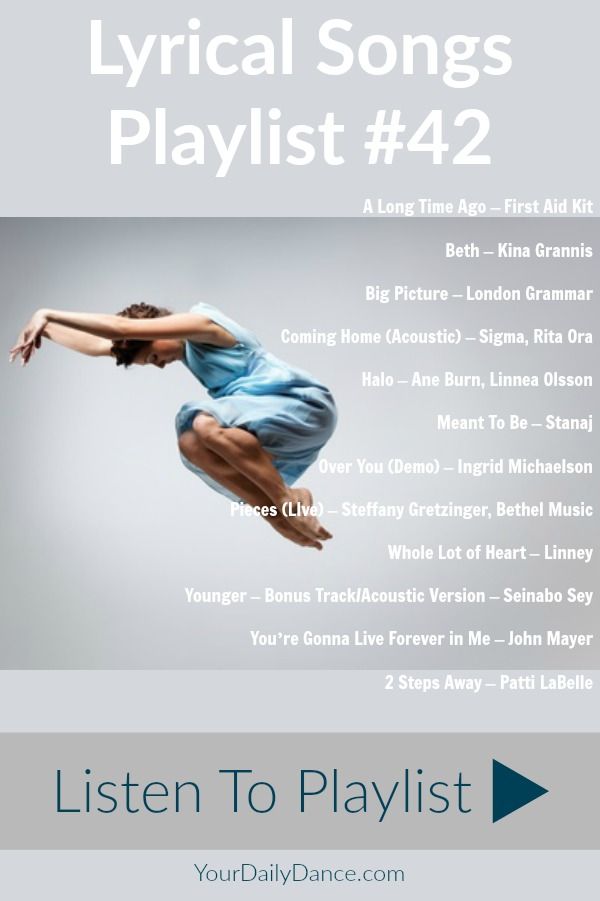
Why is it difficult? The fact that in the proposed role, in her character may have such qualities, which this actor in people despises and hates, not to mention what would accept them as part of yourself in order to live them as your own in your role, because only then will his performance be convincing.
Have you observed ever for the reaction of the actors, receiving an Oscar? Did you think why do they cry so often?
Because for in order to play their roles to them, another times, had to change my own worldview, live by other values in life, and it is very, very difficult, and even hurt. This does not mean that by switching on other values, the actor loses himself, your system of priorities in life. Here another principle: if you and I have thoughts, and we will tell them to each other, we will have two thoughts. Learning and living a different value system, man is getting richer, now he knows other languages of other people, he understands people more, sympathizes them, which means he knows how to love a real love, the same one that he spoke about Christ: "Love your neighbor as himself. "
"
And so these tears people make me feel deep respect and awe - how much someone else's grief, suffering, pain, joy and happiness fell to their lot, how much they lived like their own !!!!!!!!!
That is what differs a talented actor from just a wannabe, that he can accept any worldview and feel, he can any love and appreciate a person with everyone its shortcomings, and therefore convincingly show this image.
The dancer can allow yourself to play only yourself. But this does not mean - the same image in all dances and even within the same the same variations. Bored when partner the whole Rumba - a languid dying swan or vamp woman. It's boring when the partner is all Paso is an aggressive male, or the whole Jive - funny fool.
On the inside we are much more than outside, because in our minds and souls lives not one person and not one system of values, and whole families subpersonalities who love and hate each other, quarrel and make up, punish and forgive each other, reproach, suppress, cheering, pushing their master (that is, you) for some actions and so Further.
Often these people suddenly come to the surface and start doing something that their owner is then very ashamed. In such cases, they say: "he did not own himself", or "he was in a state affect", or "the demon took possession of him." Various psychotechnics and psychopractices (spiritual practices) teach a person to control their subpersonalities and even use them for peaceful purposes.
Yes you can definitely use them in acting skills. Enough remember which of your subpersonalities can perform one shade or another your stage persona and call her to the surface.
Moreover, each of they, among other things, often have with their unique gestures, habits, with his plasticity.
But in order to know what kind of people live inside you, you need to look after yourself and your reactions in different situations, in communication with different people and by your own reaction keep track of who it is in you now He speaks? So to speak, track the beast by habits - by mood and even by certain phraseological units which you, or rather some of your uses subpersonalities in specific situations for her.
K Unfortunately, tracking methods subpersonalities are also methods of purely practical, so in the book about them it is difficult to write, because a psychologist, providing such materials, it is necessary observe the student's reaction all the time: whether everything was understood correctly. You and yourself surely faced with unpredictable some people's reactions to information which is presented to them. you tell them one, and they are in five minutes, as in broken phone, retell it's in such a way that it's difficult for you assume that you told them completely different, so everything turned upside down.
So it's hard for me take responsibility explain you the technique of working with subpersonalities in absentia.
Some guys have the question arises: will feelings become worn out if I so often them bare on the site, will they not they are artificial, banal, not authentic from repeated use?
In return, I want you ask: is your body getting smaller natural from the fact that you do you train?
Essence that feelings are part of a single entity called "man", as well as a biological organism, both the brain and the intellect. And all this: and intellect, and body, and feelings are amenable to training, and therefore the development of their opportunities and improve their performance. The problem is that training knowledge intellect and body have long been available, but the training of feelings is an aspect for now little developed. Stanislavsky called those who are trained in this sense, "people with heightened emotion."
And all this: and intellect, and body, and feelings are amenable to training, and therefore the development of their opportunities and improve their performance. The problem is that training knowledge intellect and body have long been available, but the training of feelings is an aspect for now little developed. Stanislavsky called those who are trained in this sense, "people with heightened emotion."
Soul must work day and night and day, and night…”
At the end of this chapters, I want to add the most important thing that need to know in order to do plasticity and character of your dance natural and convincing: plastic then it will be natural when your emotions will match your movement and your relationship as a couple, when all this together will create a logical picture of what is happening.
Most a simple example of illogicality: when, dancing in a closed position or in a position face to face, one of the partners looks over the head of another, or when the whole dance one of the partners or even both with all their dance they try to attract attention from the audience and judges, but they simply do not notice each other.